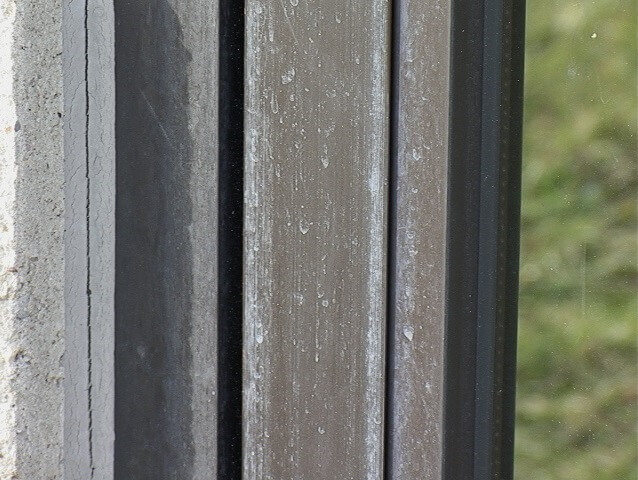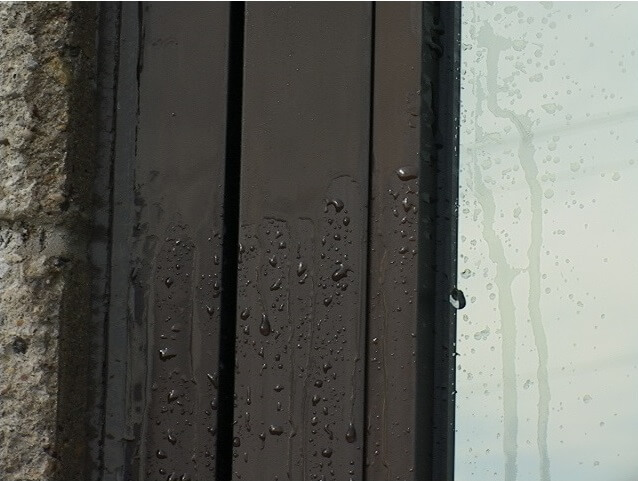![]() Find a Distributor
Find a Distributor
![]() Contact Us
Contact Us
![]() Like us on Facebook
Like us on Facebook
![]() Follow on Twitter
Follow on Twitter
![]() Connect on LinkedIn
Connect on LinkedIn
![]() Follow on Instagram
Follow on Instagram
![]() Subscribe on Youtube
Subscribe on Youtube
MENU
Anodized aluminum is generally used as trim to commercial door and window units. OneRestore® Glass is remarkable in that, while it is an acid product, it does not harm the finish. It will remove the oxidation, and after rinsing, leave the surface ready for the A.R.T. coating.
The A.R.T. (Anodized Restoration Treatment) coating is a much better anodized treatment than most on the market in that it does not fail. On the West coast, we found a surprising number of failed dressings. These include (but are not limited to) many types of acrylics and urethanes. An extensive number of environmental or applications issues can contribute to the product failing, creating the difficult and expensive problem of removal. Whether you are going to strip the dressings chemically or manually abrade the surface, you have a tedious and labor intensive situation that can have many negative consequences. Abrasion has the potential to physically damage aluminum surfaces; attempting chemical removal with the wrong product could remove the anodized coating from the aluminum. Applying A.R.T. voids the need for potentially risky dressing removal. The A.R.T. coating will biodegrade in three to seven years and can be replaced by janitors, window cleaners or restoration professionals in a quick, safe and much less expensive process.


Your approach to the anodized aluminum restoration process is decided by whether or not you have to remove one of these failed dressings. The removal process can be started after proper testing to determine which product works best on the failed dressing. One of our paint strippers, restoration cleaners or careful abrasion with nylon scrubbing pads may be effective. The strippers and cleaners to be tested commonly include AcrylicStrip, Graf-Ex, OneRestore® and PSC (Polished Stone Cleaner). Given the sheer amount of different dressings and chemicals that could have been applied over time, all of the products must be tested prior to use and careful consideration must be given to the surrounding surfaces. For example: AcrylicStrip and Graf-Ex are solvent-based safe strippers, but solvents may leave mild dark stains on porous substrates. The stains will lessen overtime but should be noted as a consequence of use before starting. The effort involved in removing the unsightly failed dressing is part of a litany of cleaning and stripping concerns. Should a dressing fail, the inherent risk to the metal and finish may be the best reason to avoid a “durable” dressing.
Anodized aluminum that has not been dressed can be cleaned with OneRestore®. It should be wiped on with a cloth or sprayed on with a trigger sprayer and brushed with a soft brush, then rinsed with low pressure or a garden hose. After the surface is completely dry, simply apply a small amount of A.R.T. to a shop cloth or any other lint free applicator and wipe it on. The A.R.T. should be spread to the point that you cannot leave a fingerprint. A thicker coat can be left if it is for more protective than cosmetic purposes, such as on oceanfront high rises where it will serve as a salt damage deterrent. On ground level, even though the product is non-hazardous, spread the A.R.T. out so that it does not stay wet to the touch or rub off on clothing. At the ground level, the process is easily repeated every other year and does not need as heavy an application.